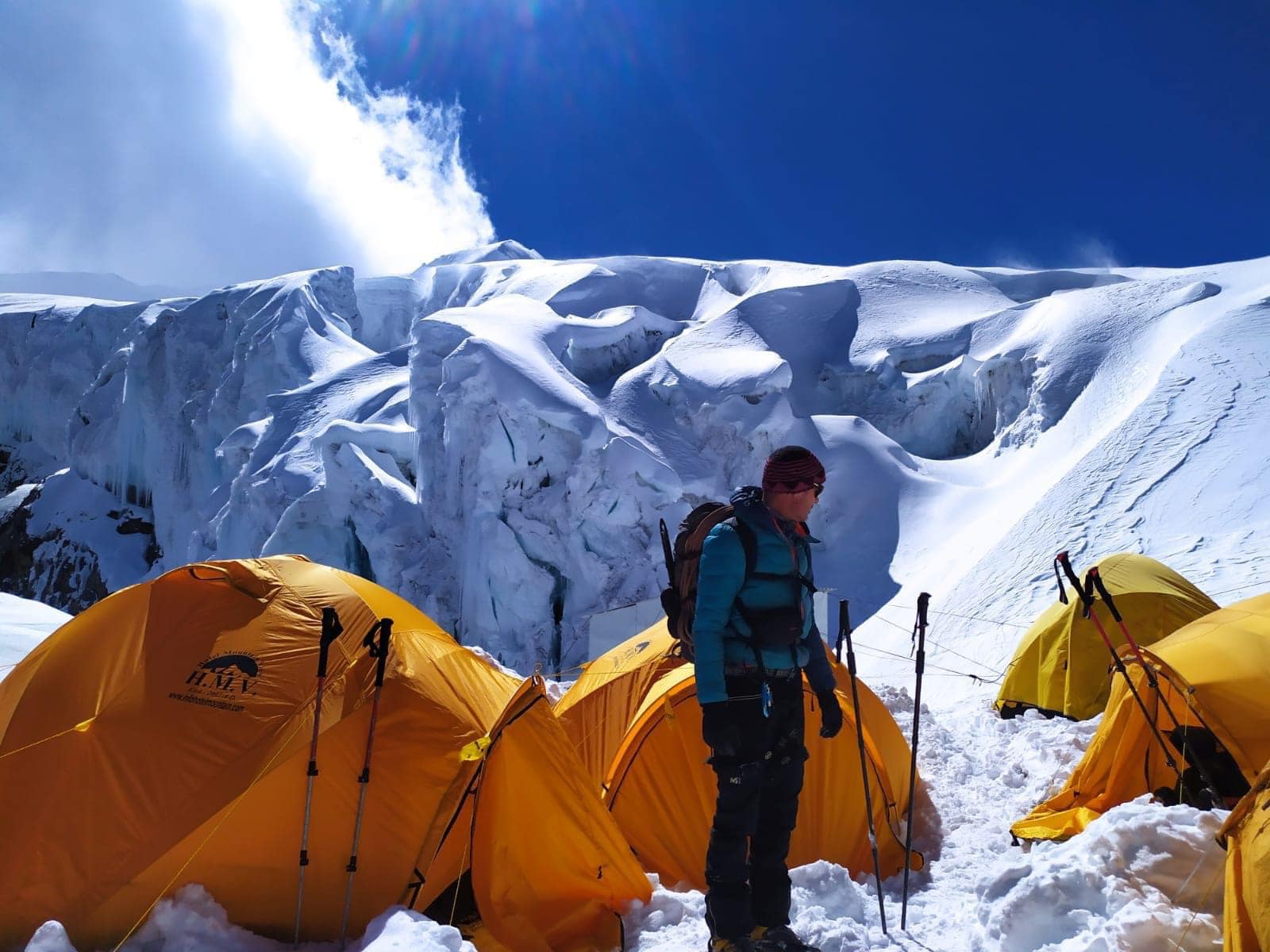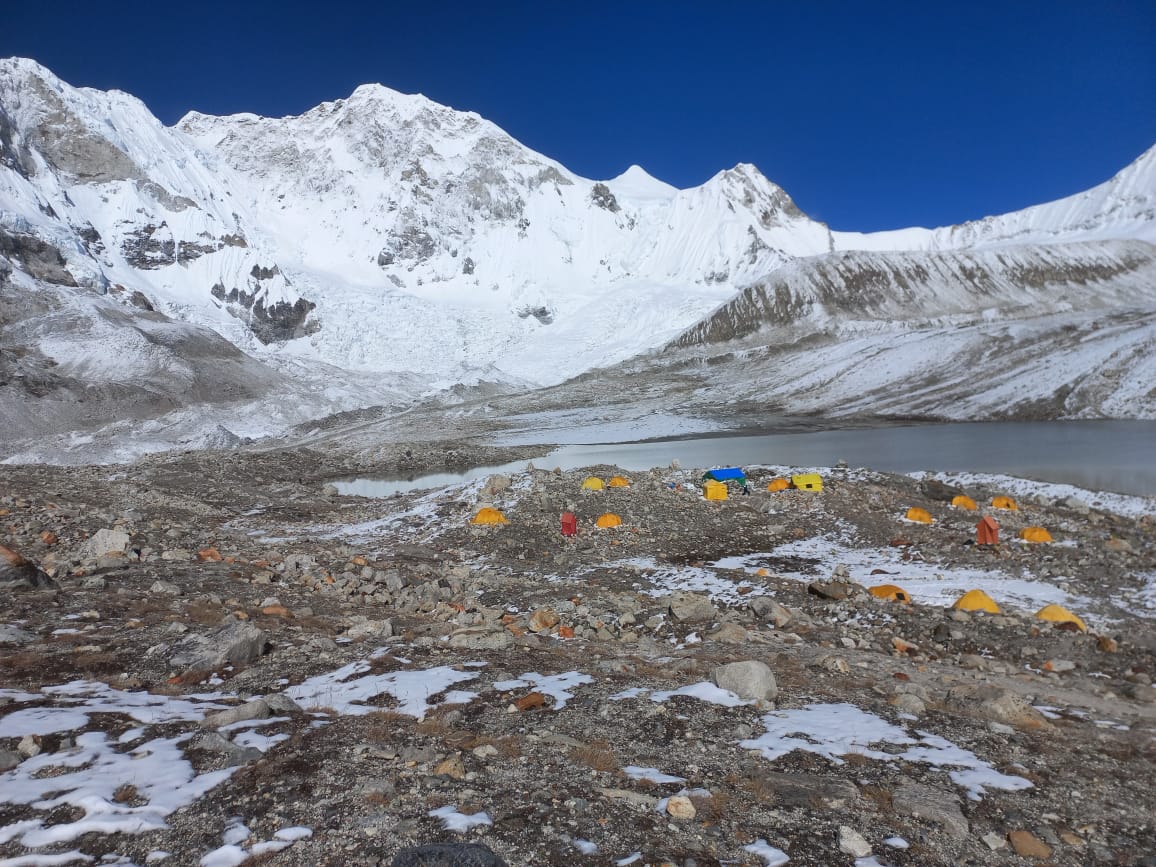Nepal is best known for its mountains. It is the home of about 1300 mountain peaks, including the world’s highest mountain “Mt Everest”. The mountains in Nepal are mesmerizing, you can’t beat the sense of satisfaction that comes with reaching the top of the mountains, no matter what height the peak is. When it comes to size and height, the NMA (Nepal Mountaineering Association) has divided mountains into two categories– Expedition and Trekking peaks in Nepal. Expedition peaks are higher peaks, they need weeks of planning and take days to summit. However, trekking peaks are less challenging and ideal for beginners.
NMA has classified 28 peaks as “Trekking Peaks” and they range from 5800m to 6600m. These fascinating peaks offer amazing adventures with beautiful scenery and well-maintained routes. Though less challenging, they require preparation, training, proper acclimatization & equipment, and physical fitness. Among other peaks, some trekking peaks are more popular due to their location, grade, and the views they offer. The 7 most popular trekking peaks are:
Mera Peak – 6476m / 21247 ft
Mera Peak is the highest trekking peak in Nepal. This Peak is a difficult trekking peak yet falls under a non-technical category. To reach Mera Peak, you will follow the route that heads from Lukla to the beautiful Hinku Valley. During the trip to Mera Peak, you will see the beautiful villages of Sherpas and the Himalayan flora and fauna. The views from the summit are marvelous as you see the incredible views of Mt. Everest, Mt. Lhotse, Mt. Cho Oyu, Mt. Nuptse, Mt. Ama Dablam, Mt. Makalu and many more.
Location: Hinku Valley
Difficulty grade: Moderate
Best time: Spring (March-May) & Autumn (September-November)
Climbing Days: 1/2 Days
Island Peak – 6189m / 20305 ft
Island Peak is probably one of the most well-known and popular trekking peaks in the Khumbu Region. It is also a non-technical peak though physically hard to climb. Island Peak rises from the Lhotse glacier from the south end which offers magnificent views from the summit. Peaks like – Mt. Everest, Mt. Lhotse, Mt. Makalu, Mt. Cho Oyo, Nuptse, Mt. Ama Dablam, etc are seen from the summit. The trip to Island Peak passes through the beautiful villages of the Sherpas, the dense forest of rhododendrons, and the Himalayan flora and fauna of Sagarmatha National Park.
Location: Khumbu Valley
Difficulty grade: Moderate
Best time: Spring (March-May) & Autumn (September-November)
Climbing Days: 1/2 Days
Lobuche Peak – 6119m/ 20076 ft
Lobuche Peak is one of the most popular climbing peaks in the Everest region. It is located on the trail to Everest Base Camp. Lobuche Peak is a challenging peak as it rises over the moraines of the Khumbu Glacier. It consists of two faces Lobuche East and Lobuche West, but Lobuche East is popular with most climbers. The summit offers magnificent views of Mt. Everest, Mt. Lhotse, Mt. Cho Oyo, Nuptse, Mt. Ama Dablam, Mt. Pumori and Mt. Thamserku. The trip takes you to experience the culture, traditions & lifestyle of Sherpa people and witness the beautiful sight of the Khumbu Glacier. The trail to the Lobuche peaks passes through the dense forest of rhododendron and unique flora and fauna of Sagarmatha National Park.
Location: Khumbu Valley
Difficulty grade: Moderate
Best time: Spring (March-May) & Autumn (September-November)
Climbing Days: 1/2 Days
Pisang Peak – 6091m / 19984 ft
Pisang Peak is the most popular trekking peak in the Annapurna region. It rises between Mt. Annapurna I and Mt. Manaslu. Pisang peak is considered to be the easiest peak in Manang Valley. During this summit, you will get the close up views of Annapurna Massif, Tilicho Peak, Manaslu, Ghangapurna & Lamjung Himal. The trip passes through Annapurna Circuit trek. The trip offers you the authentic culture of Gurung community and the beautiful flora and fauna of Annapurna Conservation Area.
Location: Manang valley
Difficulty grade: Moderate
Best time: Spring (March-May) & Autumn (September-December)
Climbing Days: 1 Day
Chulu East – 6584m / 21601 ft
Chulu East is one of the enthralling and most demanding trekking peaks in the Annapurna region. It is a technically challenging peak, which requires knowledge and trekking experience. It lies above Manang Valley with marvelous views of Annapurna Massif, Dhaulagiri, Manaslu, Gangapurna & Tilicho Peak from the summit. The routes offer a diverse culture, dense forest of – oak, the deepest gorge – Kali Gandaki gorge and a unique ecosystem.
Location: Manang Valley
Difficulty grade: Moderate
Best time: Spring (March-May) & Autumn (September-December)
Climbing Days: 1 Day
Kyajo Ri Peak – 6186m/20,296ft
Kyajo Ri is one of the best trekking peaks lying in the Everest region. The Peak is located between Gokyo Valley and Thame. It is a semi-technical peak that offers incredible views of Mt. Everest, Mt. Lhotse, Mt. Cho Oyo, Nuptse, Mt. Ama Dablam, Mt. Pumori and Mt. Makalu. In addition, this trip provides you an opportunity to explore the lifestyle of the Sherpas and the natural beauty of Sagarmatha National Park. The trail passes through the diverse villages, dense forest of rhododendron & oak and Gokyo Valley where you can explore the cluster of high altitude mountain Lakes.
Location: Khumbu Valley
Difficulty grade: Challenging
Best time:Spring (March-May) & Autumn (September-November)
Climbing Days: 2/3 Days
Dhampus Peak – 6012m / 19724 ft
Dhampus Peak is located in the northeast part of Dhaulagiri Massif. This Peak is also known as Thapa Peak. It is a major attraction peak in Dhaulagiri Circuit Trek. The trip to the peak passes between the Annapurna and Dhaulagiri range offering the majestic Himalayas views of Dhaulagiri Massif, Tukuche Peak, Annapurna Massif & Nilgiri. Moreover, you will explore the wide variety of vegetation and landscapes, witnessing the unique culture and tradition of the Thakalis people. The trail passes through the traditional villages of Kali Gandaki Valley, the deepest gorge – Kali Gandaki gorge & dense forest with exotic flora and fauna of the region.
Location: Kali Gandaki valley
Difficulty grade: Moderate
Best time: Spring (March-May) & Autumn (September-December)
Climbing Days: 1/2 Days
Conclusion
In conclusion, Nepal’s reputation as a haven for mountain enthusiasts is well-deserved, with its impressive array of trekking peaks catering to various skill levels. The country, home to around 1300 mountain peaks, including the iconic Mt. Everest, offers a unique blend of challenges and rewards for climbers. The Nepal Mountaineering Association’s classification of trekking peaks, exemplified by popular summits like Mera Peak, Island Peak, and Lobuche Peak, provides opportunities for both beginners and experienced climbers. Each trekking peak in Nepal presents a distinct adventure, featuring breathtaking landscapes, cultural immersion in Sherpa villages, and encounters with diverse flora and fauna. Whether scaling the heights of Chulu East, Kyajo Ri, or Dhampus Peak, Nepal’s trekking peaks promise unforgettable experiences, making it a premier destination for those seeking both adventure and natural beauty.


